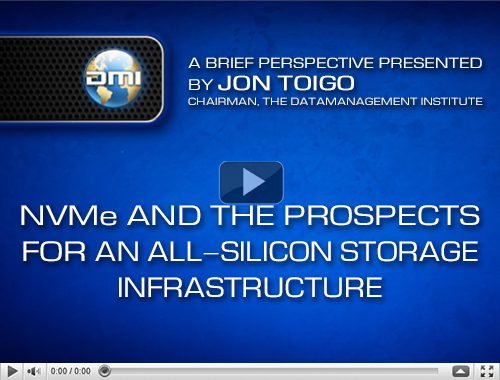Initially presented as the alternative to HDD, flash is really worth a look in terms of cost and proposed benefits. However, it has vulnerabilities, like memory wear-out, fragmentation, which vendors are trying to hide with lots of marchitecture. Commercial SSDs based on flash used SATA controllers, which were convenient, but quite expensive. Besides, SATA controller design featured multiple buffers, which led to the I/O latency increase.
NVMe (Non-Volatile Memory Express) is a scalable, high performance CPU PCI-E Gen3 direct connect to NVMe devices, developed for server systems using SSDs technology. NVMe eliminates the need to use the SATA controller and proprietary workarounds, because it provides a PCIe interface for flash modules. It simplifies storage I/O processing and uses less CPU instructions to process I/O request than SAS/SATA.
In this webinar, IT expert Jon Toigo shares his thoughts on present and future of NVMe. Watch it to learn what values NVMe brings to performance and in-memory databases and its use cases within different software and hardware solutions.


